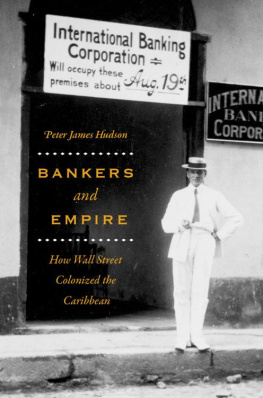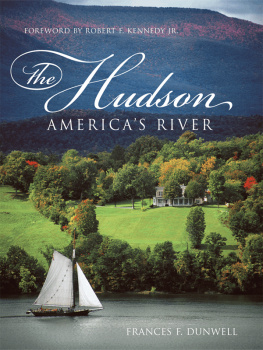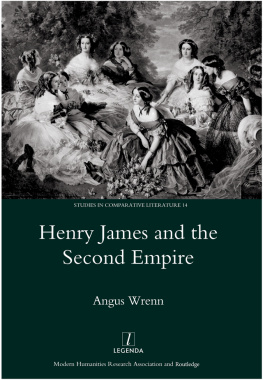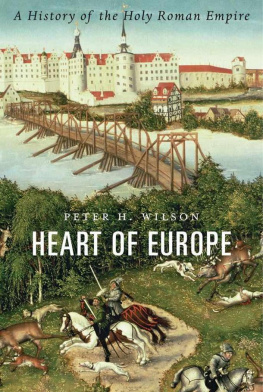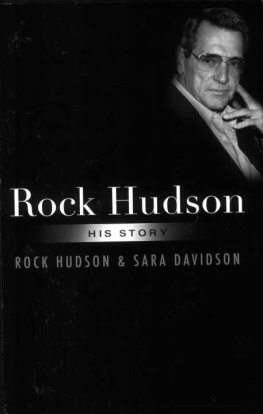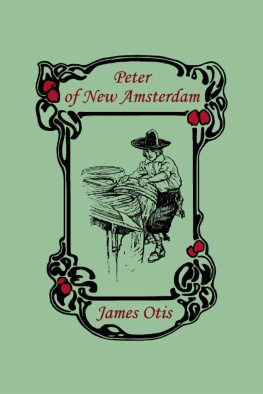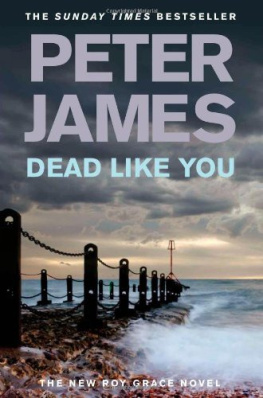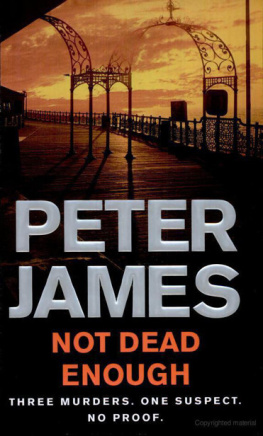Peter James Hudson - Bankers and Empire
Here you can read online Peter James Hudson - Bankers and Empire full text of the book (entire story) in english for free. Download pdf and epub, get meaning, cover and reviews about this ebook. year: 2017, publisher: University of Chicago Press, genre: Science. Description of the work, (preface) as well as reviews are available. Best literature library LitArk.com created for fans of good reading and offers a wide selection of genres:
Romance novel
Science fiction
Adventure
Detective
Science
History
Home and family
Prose
Art
Politics
Computer
Non-fiction
Religion
Business
Children
Humor
Choose a favorite category and find really read worthwhile books. Enjoy immersion in the world of imagination, feel the emotions of the characters or learn something new for yourself, make an fascinating discovery.
- Book:Bankers and Empire
- Author:
- Publisher:University of Chicago Press
- Genre:
- Year:2017
- Rating:3 / 5
- Favourites:Add to favourites
- Your mark:
- 60
- 1
- 2
- 3
- 4
- 5
Bankers and Empire: summary, description and annotation
We offer to read an annotation, description, summary or preface (depends on what the author of the book "Bankers and Empire" wrote himself). If you haven't found the necessary information about the book — write in the comments, we will try to find it.
Bankers and Empire — read online for free the complete book (whole text) full work
Below is the text of the book, divided by pages. System saving the place of the last page read, allows you to conveniently read the book "Bankers and Empire" online for free, without having to search again every time where you left off. Put a bookmark, and you can go to the page where you finished reading at any time.
Font size:
Interval:
Bookmark:
Peter James Hudson
The University of Chicago Press
Chicago and London
Publication of this book has been aided by a grant from the Bevington Fund.
The University of Chicago Press, Chicago 60637
The University of Chicago Press, Ltd., London
2017 by The University of Chicago
All rights reserved. No part of this book may be used or reproduced in any manner whatsoever without written permission, except in the case of brief quotations in critical articles and reviews. For more information, contact the University of Chicago Press, 1427 E. 60th St., Chicago, IL 60637.
Published 2017
Paperback edition 2018
Printed in the United States of America
27 26 25 24 23 22 21 20 19 18 1 2 3 4 5
ISBN-13: 978-0-226-45911-0 (cloth)
ISBN-13: 978-0-226-59811-6 (paper)
ISBN-13: 978-0-226-45925-7 (e-book)
DOI: https://doi.org/10.7208/chicago/9780226459257.001.0001
Library of Congress Cataloging-in-Publication Data
Names: Hudson, Peter James, author.
Title: Bankers and empire : how Wall Street colonized the Caribbean / Peter James Hudson.
Description: Chicago ; London : The University of Chicago Press, 2017. | Includes bibliographical references and index.
Identifiers: LCCN 2016047600 | ISBN 9780226459110 (cloth : alk. paper) | ISBN 9780226459257 (e-book)
Subjects: LCSH: Banks and bankingUnited StatesHistory20th century. | Banks and bankingCaribbean AreaHistory20th century. | Branch banksCaribbean AreaHistory. | CapitalismUnited States. | RacismEconomic aspectsUnited States. | ImperialismEconomic aspectsUnited States. | United StatesForeign economic relationsCaribbean Area. | Caribbean AreaForeign economic relationsUnited States. | United StatesEconomic conditions20th century. | Caribbean AreaEconomic conditions20th century.
Classification: LCC HG2481.H83 2017 | DDC 332.10972909041dc23 LC record available at https://lccn.loc.gov/2016047600
 This paper meets the requirements of ANSI/NISO Z39.48-1992 (Permanence of Paper).
This paper meets the requirements of ANSI/NISO Z39.48-1992 (Permanence of Paper).
For D.S.G.
In memory of Reverend Delanot Pierre
Stillman wanted 55 Wall Street remodeled as a temple of finance whose design replicated the Pantheon. He sent a bank officer to Rome for study and hired McKim, Mead, and White, the architectural darlings of the corporate world, to oversee the renovations.
On December 19, 1908, a caravan of clerks, tellers, and runners shouldered leather satchels containing $10,000 each and marched the City Banks half-billion dollar cash reserve from the old premises at 52 Wall Street across the street to number 55 (fig. I.1).

I.1. Irving Underhill, National City Bank, Wall Street, 1909. Library of Congress Prints and Photographs Division, Washington, DC.
There were some reservations concerning the new building. Frank A. Vanderlip (fig. I.2), who replaced Stillman as City Bank president three weeks after the opening (and who took the doors of the old Customs House to Beechwood, his Scarborough-on-Hudson estate), had wanted a large, modern structure.

I.2. Frank A. Vanderlip (1924). National Photo Company Collection. Library of Congress Prints and Photographs Division, Washington, DC.
55 Wall Street embodied Mumfords descriptions of a debased imperial architecture. Its neoclassical detailing and Romanesque veneers cloaked the City Banks financial labors within the domestic economy, shrouded its modern office technologies, obscured its ties to the exploitation of oil and railroads and cotton and steel, and veiled its connections to the oligopolistic corporations using the bank as their private financier. But hidden behind 55 Wall Streets faade of neoclassicism was another imperial enterprise: an enterprise of banking, finance, and empire whose ambitions and expansions were braided through the US colonial and neocolonial projects of the early twentieth century. While the City Bank was undergoing a transition from nineteenth-century merchant bank to twentieth-century commercial and industrial financier, it was also remaking itself as an international financial institution. Where it was once jockeying for business and influence among the brokers, merchants, and commission agents of old New York, the City Bank was now muscling its way to a seat at the table of international finance alongside the imperial banking houses of London, Paris, and Berlin. And where it once served the financial needs of a fast-growing domestic economy, it was increasingly involved with the banking, trade finance, and debt issuance of the Caribbean, Latin America, and Asia.
By the time 55 Wall Streets renovations were complete, Stillman and Vanderlip were recasting their institution as an imperial bank. The City Banks history began to be written overseas, and it increasingly grappled with the conundrums of law and regulation governing international commerce, banking, and finance, as well with the questions of racism and militarism underwriting US imperialism and finance capitalism. 55 Wall Streets neoclassical faade obscured the modern economic aspects of empire and simultaneously expressed imperialisms racial and cultural orders. Summoning the interlaced history of finance capitalism with racial capitalism, 55 Wall Street stood as an elegant monument to the City Banks cruel imperial history.
The early history of US imperial banking and the internationalization of Wall Street began alongside the project of US colonial expansion at the turn of the nineteenth century and ended amid the financial and economic crises of the 1930s. It was fueled by the capital accumulations reaped from the industrial development, corporate consolidation, and economic expansion that followed the grim history of territorial dispossession that marked the settling of the US West. New York City was its engine. New Yorks bankers reaped the rewards of this growth as both the financiers of industrialization and as the representatives of a bankers bank serving regional financial institutions and the federal government. Buoyed by this newfound wealth, New York Citys financial institutions began to look overseas, searching for outlets for their swelling accumulations of unproductive capital. They also sought to consolidate Wall Streets international position in finance, trade, and commerce. They viewed the organization of an imperial banking system as a critical component in the rise of New York and the westward traverse of
With these ambitions, bankers and businesspeople set their sights on asserting control over the trade and finance of the Americas. They looked to displace the European joint-stock banks that had commanded South American trade since the mid-nineteenth-century lending booms as well as the Canadian chartered banks that dominated the financing of North American trade in the British West Indies and the Spanish-speaking islands. US bankers had lagged behind. Their European and Canadian competitors were quick to seize on the regions shifting needs for capital, brought on by both the end of slavery and the emergence of nominally free populations of African and indigenous workers and peasants, and by demands for capital by independent postcolonial states seeking to fund their modernization projects. Wall Streets expansion into the Caribbean and Latin America was grafted onto this postemancipation history of economics and finance as it intersected with questions of national sovereignty, political governance, and the political economy of race, labor, and citizenship.
Font size:
Interval:
Bookmark:
Similar books «Bankers and Empire»
Look at similar books to Bankers and Empire. We have selected literature similar in name and meaning in the hope of providing readers with more options to find new, interesting, not yet read works.
Discussion, reviews of the book Bankers and Empire and just readers' own opinions. Leave your comments, write what you think about the work, its meaning or the main characters. Specify what exactly you liked and what you didn't like, and why you think so.

